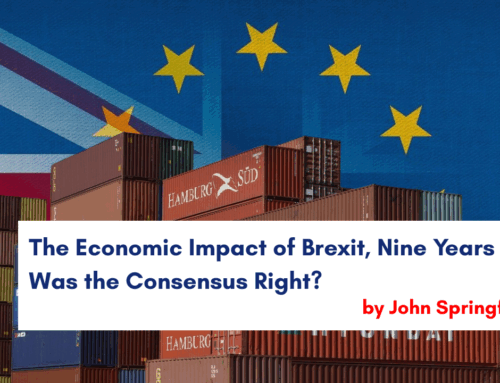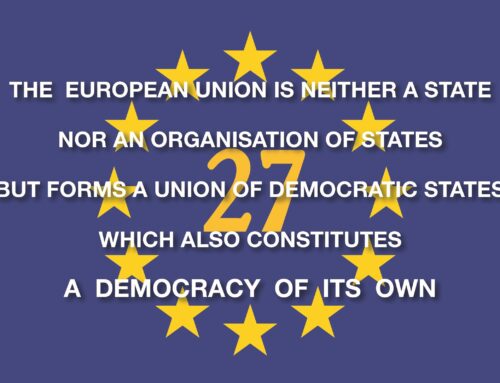
by David Gow
Editor of Sceptical.scot, Senior Adviser at Social Europe and Senior Adviser at Acumen Public Affairs. He is former European Business Editor of The Guardian and worked for The Scotsman and London Weekend Television.
26th May 2020
Federal Germany has won substantial plaudits around the world, not least in other parts of Europe, for its comparative success in suppressing and/or mitigating the coronavirus pandemic. Others have pinpointed the relative success, too, of federal Australia in controlling the spread of infections.
Of 5.13m confirmed cases and 333,489 reported deaths worldwide at the time of writing, Germany had 179,150 cases and 8219 deaths, giving a mortality rate of 9.89 per 100,000. Australia had 7095 cases and just 101 deaths, with a mortality rate of 0.4. The UK’s rate was 54.33, Spain’s 59.80 and Italy’s 53.76.
Even the USA, with a maverick (to say the least) federal President and a dystopian approach to the pandemic, the mortality rate was 28.95 while that of federal Switzerland stood at 22.29 and of federal Canada at 16.90. In federal South Africa, in many ways a failed state, it was 0.58.
But, of course, we know by now we may be comparing apples with pears since a) countries are at different stages of experiencing the pandemic (“curve”) and b) they have varying methods of counting and reporting on cases/deaths. UK deaths of just over 36,000 may be almost double that, say independent statisticians.
Even so, federal countries are “out-performing” others and it is noticeable that even Brazil, again with an idiosyncratic federal President, has a mortality rate below 10 – thanks, in no small, part to individual states among the 26 which ignore the instructions coming out of Brasilia and decide to go their own way with stricter measures during any lockdown.
The UK’s experience has also been instructive, as the integrated “Four Nations” approach – England, Scotland, Wales and Northern Ireland in lockstep “following the science” – has slowly, gradually, disintegrated. This has prompted outrage among proponents of the Union as, especially, Scottish First Minister Nicola Sturgeon has appeared in their eyes to cock a snook at Westminster/Whitehall first by announcing policy details agreed at Cobra meetings before Boris Johnson et al and then by “doing her own thing” in terms of confinement measures. The Conservative pro-Brexit pro-Boris media see the Scottish nationalist (SNP) politician of simply pursuing an independence agenda.
Similarly, Wales, with its Labour First Minister, has refused, for instance, to re-open schools at the pace determined by Westminster while Northern Ireland, already a special case because of its effective membership of the EU single market post-Brexit, increasingly looks to Dublin when setting its agenda for exiting lockdown.
This has suggested to, shall we call them, semi-federalists such as Gordon Brown, the ex-Prime Minister, that the UK should go the whole federalist hog if it is not to disintegrate fully into the Disunited Kingdom. Even Nick Timothy, ex-chief of staff to one of Brown’s successors, Theresa May, now argues against “haphazard devolution”, saying: “If we want to learn from the pandemic we need to decentralise the state. We need a new and carefully structured constitutional settlement.”
Indeed, within Scotland, there are those arguing that isolation/lockdown measures that are pertinent to the urbanised Central Belt are irrelevant to the Western or Northern Isles (Orkney and Shetland) where Covid-19 incidence is low. Critics suggest Sturgeon has over-centralised Scottish efforts under her own command & control and that of a handful of civil servants/advisers around her. They even suggest she should have been “independent” from the start and imposed lockdown restrictions far earlier.
The key here is the degree to which, in federal states, policy is enacted on a hub-and-spoke basis. In Germany, Berlin or, in fact, the Robert Koch Institute have been administering a basic national pandemic plan, with the 16 Länder (ultimately responsible for healthcare), following the national plan but adding discretionary extra restrictions/relaxations. The two levels have worked in relative harmony.
In the US, by contrast, with federal election campaigns in full swing in “blue” (Democrat) and “red” (Republican) states, tensions between Washington under Trump and state capitals has almost broken the country in two. Even levels of funding are decided according to political affiliation, not need, and several Democrat-run states face virtual insolvency. As Laura Tyson, ex-Chair of the Council of Economic Advisers under President Clinton, put it (Project Syndicate $) recently: ” If state governments are forced to slam on their fiscal brakes, much of the benefit from the federal government’s own countercyclical stimulus measures will be offset, resulting in an unnecessarily deeper recession, higher unemployment, and a slower recovery.”
So, the assertion that federal states do tend to work better in containing the pandemic comes with a decided caveat – provided the constituent parts sing, in some form of unison, from the same hymn-sheet. The great outlier in this is, of course, Belgium which has the highest mortality rate in the world at 80 deaths per 100,000, with 56,511 cases and 9212 deaths. But, then, nobody would remotely suggest that this is a model state with its constituent parts at each other’s throats culturally, economically and politically on a constant basis – and no majority government possible since the May 26 general election last year.







[…] the COVID crisis raging on, it is easy to miss the fact that federal states are dealing with COVID-19 rather well. There is a clear difference between the European Federal countries and unitary states. The […]